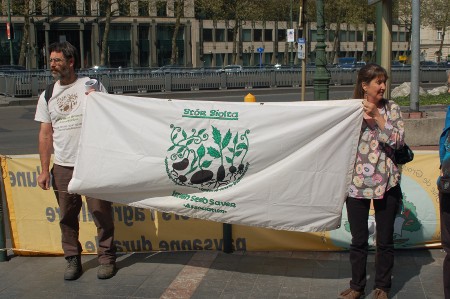I have this love-hate relationship with site statistics. On one hand it’s important to understand who’s looking at your website and why, but on the other hand there aren’t a lot of reliable tools out there to analyse the data. I don’t really want to publish numbers that don’t mean anything, which people then go on and use to compare this site with others. I would however like to share some of the statistics with people who read this blog.
I use several different tools, none of which are very good or give a complete picture, but here is a list of what they are and in general terms what they tell me.
RSS Subscribers
This is the one number I publish on the front page of this blog. You can find it on the right hand side, down a little ways on the page. As of the time of writing this post, the number it gives is about 3000.
The ‘secret’ of this number, that many blogs publish, is it can cover any number of days in which the RSS feed was last accessed. I currently have this set to 6 months, so any unique IP address that accesses the RSS feed in this time was counted. I reserve the right to change this time by the way.
This number is not really a good indication of the true number of people reading the blog in this way. Many robots and search engines use the RSS feed as a way of collecting statistics, and so get counted. Also many services like Google News Reader use the RSS feed, but then in turn have many people reading it who may not be properly counted.
What this number tells you, in a very vague way, is the trend in the number of people reading this blog. After I make a lot of posts, you’ll probably see this number go up. In the northern hemisphere winter you’ll probably see the number go down, with the lowest point around the new year.
This tool also gives some other statistics which I don’t publish, like links that people click on in posts and the number of times individual posts are read. I don’t usually find any of these numbers useful, and the tool doesn’t present them in a very useful way.
Piwik
Unlike the RSS Subscribers tool, this tool shows statistics about people who read the blog in an ordinary web browser. The statistics it gives are totally different from the RSS statistics, so no useful comparison is really possible.
This tool also gives a lot of information about the visitors themselves, like country, ISP, operating system — even screen shape and resolution. If visitors come via a search engine, it will show what the person searched on.
The two most interesting conclusions that can be drawn from this tool are first the number of people reading the blog in a normal browser is about 300 per day, and secondly about 2/3 of all of these visitors come via search engines like Google. The remaining 1/3 come by either following links elsewhere on the Internet, or from the bookmarks/favorites list on their browser.
Many search engine visitors, come for something very specific, for example find an old post on growing tomatoes or fava beans, then go away. Others can sometimes spend quite a lot of time here and read hundreds of archived posts.
One of the most astonishing things this tool shows are the different countries people who read this blog live in. The UN recognizes 197 different countries, and in any given month there are usually visitors here from around 100 different countries. Here’s the list of countries for March 2011, roughly in descending order of the number of visitors. Remember this is only people who use a browser, and there may be others who use the RSS feed:
United States
United Kingdom
Netherlands
Canada
Australia
Unknown
France
Germany
New Zealand
Italy
Greece
India
Belgium
Turkey
Sweden
Ireland
Spain
Denmark
Romania
South Africa
Finland
Hungary
Switzerland
Slovenia
Mexico
Poland
Norway
Portugal
Korea, Republic of
Russian Federation
Brazil
Singapore
Japan
Trinidad and Tobago
Serbia
Thailand
Bulgaria
Indonesia
Taiwan
Malaysia
Czech Republic
Peru
China
Croatia
Colombia
Lithuania
Israel
Estonia
European Union
Ukraine
Slovakia
Pakistan
Saudi Arabia
Iceland
Macedonia
Austria
Argentina
Philippines
Guyana
Egypt
Latvia
Iran, Islamic Republic of
United Arab Emirates
Ecuador
Tuvalu
Hong Kong
Cyprus
Nepal
Netherlands Antilles
Azerbaijan
Georgia
Fiji
Uruguay
Syrian Arab Republic
Albania
Gibraltar
Madagascar
Luxembourg
Samoa
Chile
Ghana
Vietnam
Guatemala
Mozambique
Moldova
Lebanon
Solomon Islands
Mongolia
Venezuela, Bolivarian Republic of
Panama
Bermuda
Sri Lanka
Global Statistics
If any, these are probably the ones you can use to compare my traffic with your own. The problem with these numbers is they include absolutely everyone and everything. They include every spammer that tries to leave a comment on the blog, every robot trying to hack the web server, every search engine and so on. There’s really lots of nonsense out there on the Internet!
Anyway, the current raw figures are roughly as follows:
Distinct hosts served (daily): 1,516 (April 25, 2011)
Distinct hosts served (monthly): 27,955 (March 2011)
Distinct hosts served (yearly): 300,000 (estimated 2010)
Several years ago, before Facebook and when the Internet was otherwise a simpler place and I didn’t have so many readers, I spent quite a bit of time trying to analyse exactly who were real readers and what was everything else. My conclusion then was that the number of ‘real’ people in these figures, was a little more than half, perhaps 60%. Using this as a basis, my working estimate of the number of ‘real people’ reading my blog is as follows:
People daily: +/- 800
People monthly: +/- 15,000
People annually: +/- 150,000
If anyone has any opinions about these numbers and conclusions, I’d be interested in hearing.
Some other statistics in case you’re interested. In the preceding 12 months:
Successful requests: 8,501,683 (hits)
Data transferred: 221.89 gigabytes


















